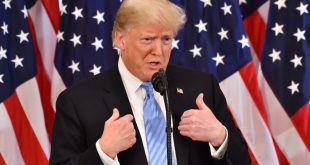This week’s UK Fiscal Statement, including tax rises and spending cuts announced by Jeremy Hunt, could mark the beginning of the process of restoring the UK’s impacted reputation, according to the Institute of Fiscal Studies.
‘The swing over a couple of months from Kwasi Kwarteng’s fiscal loosening to a big fiscal tightening is a belated recognition of some harsh financial realities, the new finance minister will be hoping that his clear commitment to fiscal responsibility and the independence of the bank of England, his full involvement of the Office for Budget Responsibility, and his less pugilistic approach to economic policymaking.
The pound weakened and UK government bonds sold off after Finance Minister Jeremy Hunt put forward the largest tax increases and spending cuts in a decade to help fight hot inflation.
“We need fiscal and monetary policy to work together”, Hunt said during the Autumn Statement to parliament, which means the government and the bank working in lockstep,” adding that “yesterday’s inflation figures show we must continue a relentless fight to bring it down.”
The pound fell 0.8% against the dollar. The benchmark 10-year U.K. government bond rose to 3.237% from 3.144% Wednesday, before easing moderately and Shorter-dated yields climbed the most. The GBP/USD pair is trading at 1.1885 at the time of writing.
While Sterling slipped immediately after the Autumn Statement, it has picked back up, especially against a weak US dollar. Whether this is the last of the Liz Truss/Kwasi Kwarteng GBP discount being washed out is debatable, but Sterling performed well this week. And the pair are over 15 big figures higher than the late-September Truss/Kwarteng low.
Today’s UK retail sales were positive enough to boost the Sterling, although a negative annual figure is nothing to shout about. The UK, and the US, economic data and events calendar is very thin next week, while US markets will be extra quiet with the Thanksgiving holiday on Thursday followed by Black Friday the next day.
A look at the daily GBP/USD chart shows the pair around one big figure higher on the week. The spike above 1.2000 on Tuesday was driven by a weaker-than-expected US PPI data, adding to market expectations that the Fed may pare back its aggressive monetary tightening policy.
Recent remarks and comments by Fed policymakers are trying to push back this sentiment, warning that rates are still going higher and for longer. If the GBP/USD pair can keep support at 1.1740, then two steps forward, one step back grind higher looks probable.

 Noor Trends News, Technical Analysis, Educational Tools and Recommendations
Noor Trends News, Technical Analysis, Educational Tools and Recommendations




